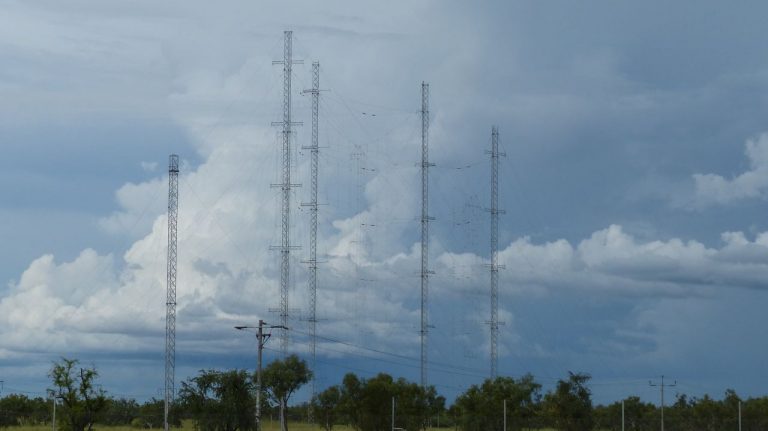You can download the B24 broadcast schedule from the links above (pdf versions)
About Shortwave Schedules
Unlike local MW or FM stations that often broadcast for long periods of the day and night, shortwave stations broadcast at times when listeners are available – usually early morning and evening – and importantly when propagation conditions are favourable to allow the signal to reach the desired audience. For this reason, Reach Beyond in Australia will broadcast on different frequencies depending on the time of day and time of year as sunlight has a major influence on the ionosphere, a charged particle layer around the earth which reflects shortwave signals back to earth.
Shortwave Antennas and Broadcast Frequencies
Large high gain antennas are used to direct the transmission signal. Some antennas can cover several countries at once whereas other specialty antennas radiate a selective narrow beam to provide maximum signal strength for particular listeners. The frequency required to be used will determine which antenna is selected. In general, day time transmissions use higher shortwave frequencies while evening and night transmissions tend to be on lower bands. The shortwave spectrum is broken into various wavelength bands (frequencies) which are available to all international broadcasters. Frequency managers of these stations meet somewhere in the world twice a year to negotiate frequencies so the possibility of interference with one another is minimised.
The Parabolic Antenna can be directed at different parts of Asia, including countries such as India, Myanmar (Burma) and Japan. A collection of simpler Dipole Antennas, shown below, provides coverage of Asia as well as the Pacific Islands.


